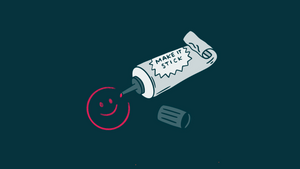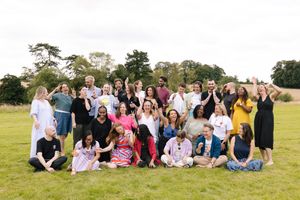
Being Brink: Walking the talk on Behavioural Innovation
The only way to start this blog is an emoji.
And, when forced to choose, a rocket — the epitome of innovation, of shooting for the stars, of teamwork, hard work, dedication and experimentation — seemed an obvious choice.
Why an emoji?
I feel like I was baptised into Brink with an emoji.
As part of my thoughtful ‘inboarding’ process, I was given a ‘Brinksters Guide’ to the organisation. My heart soared as I read about Brink “being different, bold, fun and energetic”, and in one of the first examples (of many) of Brink’s walk matching the talk, the fun sung out in the emojis that adorned the pages.
Brink is somewhere different. It’s a place of learning, laughter, challenge and humility. It’s a place of innovation. In fact, Brink is an embodiment of behavioural innovation.
Behavioural Innovation.
It’s a phrase that you want to turn around in your mouth, while the cogs turn in your brain.
A lightbulb flicks on brightly.
Ah! We know how important the human side of innovation is, and yet it’s often overlooked in a whirl of methods.
Behavioural Innovation connects innovation (which speaks to me of ideas, iteration and improvement) and behavioural science (which encourages us to realise that people’s behaviours are influenced by psychological, emotional, cultural and social factors).
‘Behavioural Innovation’ reminds us it’s people that innovate.
And if we want ‘successful’ innovation, we need to be intentional in designing with people in mind.
Innovation often puts ‘users’ at the heart.
Now, with Behavioural Innovation, we’re inviting you to also think explicitly about the people that are working on innovation.
Think about people, their behaviour, their mindset. Think too about the conditions, context and mechanisms that encourage the mindset we need for innovation (of curiosity, experimentation and courage) to thrive.
This is where behavioural science meets innovation.
The magic of Behavioural Innovation
For us at Brink, it is the combination of method, mindsets and mechanisms that is the magic of Behavioural Innovation:

Methods: The bread-and-butter of innovation
We take innovation methods (lean, human centred design) and twin them with methods from psychology, coaching and neuroscience. These methods (and the Brink way of using them) put experimentation, learning and users at the core. We are not tied to an approach, but rather use methodological bricolage, a mix and match, to find the best fit for this problem, in this context, at this moment.
Mechanisms: The unseen forces that create the context for innovation
In some cases organisations hope for innovation, but reward the status quo. We look at mechanisms to make sure we are intentional in reinforcing (rather than unwittingly undermining) innovation. This might mean looking at the biases and incentives that can nudge a culture of experimentation, as well as team structure, culture and habits, decision making systems, operational processes, and organisational processes (such as recruitment or reviews). These systems are the water that people swim in, so we want to make sure they are swimming with, rather than against the tide of innovation.
Mindset: The bedrock of our ability to innovate
Innovation demands us to be curious, to experiment and to have courage (the courage to fail, the courage to try something untested, the courage to stop something that’s not working). We need to be present, to really notice what’s happening around us, and to notice the results of our experiments. Our curiosity and courage can help us look for unintended results, and then go off plan to build on them or scrap what we were trying.
Mindset is not just an individual thing but a team thing. An innovation mindset is reinforced in interactions between people. As humans, we have social brains, and our mirror neurons pick up on (and reflect) the emotions of those around us, so culture is contagious.
If one person is spooked, it often doesn’t feel safe to speak up, so you may miss important concerns or ideas from your team. On the flip side, a culture of psychological safety — where people feel confident and safe to take risks, speak up, change their mind and learn as they go — is the number one predictor of successful, high performing teams.
It’s easy to identify traits and behaviours that underpin innovation, but how do we get there? At Brink we talk about Mindsetting — a verb which describes that mindset is fluid and needs to be constantly (and consciously) worked on. It’s an ongoing practice, which we work with people to — well, practice.
We work on this through one-to-one coaching, experiential learning and, critically, through modelling psychological safety. We speak up in meetings, say the uncomfortable thing and show that nothing bad happens when we do. In Brink I see the power of low ego and low sycophancy, of high support and high challenge.
And it rocks.
I’m loving the opportunity to be working on Behavioural Innovation, with a team that is simultaneously learning about it and modelling it.
Join us, as we find out more… And crucially, let us know what you think.




